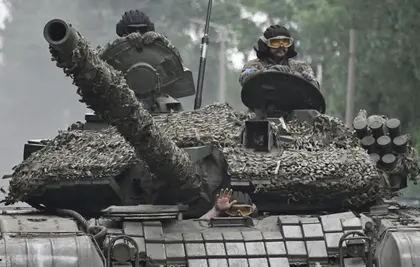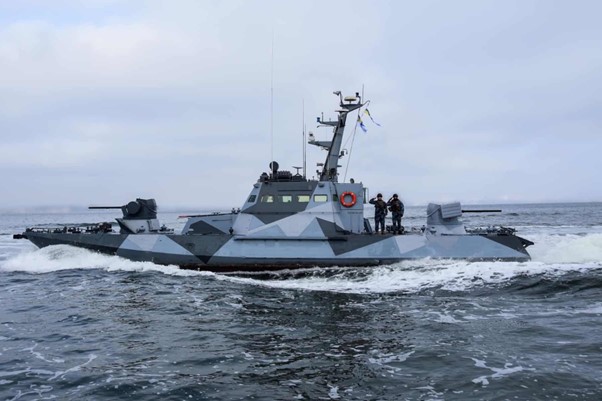Multiple sources reported renewed attacks by the Armed Forces of Ukraine (AFU) in two separate sectors, one in Ukraine’s Donetsk region, south of Velyka Novosilka, near Staromaiorske; and one in Ukraine’s Zaporizhzhia region, south of Orikhiv, near Robotyne.
Russian official and unofficial sources claimed they defeated AFU forces with heavy losses near Robotyne. Ukrainian official and unofficial sources said little about the Robotyne battle, but both sides reported AFU progress around Staromaiorske.
- Obtain the most current Ukraine news articles released today.
- Obtain the most current Ukraine news articles released today.
- Ukraine War Casualties
JOIN US ON TELEGRAM
Follow our coverage of the war on the @Kyivpost_official.
AFU units kicked off attacks in both sectors in early June and have made slow progress since then in continuing, small-scale assaults day after day, typically with 2 to 6 armored vehicles and 10 to 20 soldiers tasked to capture a section of wood line or a series of Russian fortifications.
Ukrainian reserve forces in the fight
Russia-affiliated information platforms claimed Kremlin forces around Robotyne on Wednesday demolished a tank-infantry attack dramatically larger than anything attempted by Kyiv in weeks anywhere on the front. The pro-Russia blogger Vladimir Rogov in a Thursday morning report said the AFU “threw into battle at least two assault detachments from the 116 and 118 (Mechanized Brigades), reinforced by 47 (Mechanized Brigade)… and two tank companies… were involved.”
Both the 116th and 118th are, according to open source reports, AFU reserve formations previously untested in combat. There was no outside confirmation of the Russian claim, effectively, that AFU high command had just thrown two more of its precious, NATO-equipped reserve brigades into the fighting.

Ukraine Withdraws From Destroyed Donbas Town
Other Russian media platforms, including state media, reported a Ukrainian assault in the Robotyne sector of substantially larger scale than in recent weeks. Estimates of total numbers of Ukrainian vehicles participating in the attacks ranged from 80 to 100 armored vehicles of all types.
All claimed Russian victory, with Rogov reporting that Russian defenses destroyed 21 tanks along with 14 armored infantry carriers and killed or wounded 220 AFU soldiers. Fighting was continuing on Thursday, the pro-Russia information platform Rybar-Z said.
Independent platforms on Thursday published drone and ground video geolinked to the Robotyne sector showing Ukrainian infantry fighting vehicles and tanks apparently damaged or destroyed in recent fighting. Independent estimates of Ukrainian losses, based on those images, placed Ukrainian losses at two Leopard tanks, 6 T-64 tanks, four T-72 tanks, three Bradley infantry fighting vehicles, four M-113 armored personnel carriers, and six BMP infantry fighting vehicles.
⚡️Pictures of war
— chris__759 (@chris__759) July 26, 2023
Damaged equipment of the Armed Forces of Ukraine 🇺🇦 in the Rabotyne area in the defense zone of the 70th Regiment of the RF Armed Forces 🇷🇺. pic.twitter.com/znM6UfFSpJ
Ground video showed advancing AFU units passing stationary vehicles, some with limited damage. Russian drone video showed a Ukrainian M-113 exploding and burning. It was not clear how many knocked-out fighting vehicles might be recovered and repaired by the AFU.
The Ukrainian military was tight-lipped about battles in the Robotyne-Orikhiv sector. In its daily situation report published Thursday morning no mention was made of Russian reports of heavy AFU losses in the area. It merely stated that fighting was in progress.
An official Ukrainian army flash statement made public at 6 a.m. on Thursday said, in part, “The Defense Forces of Ukraine continue to conduct an offensive operation in the Bakhmut, Melitopol and Berdyansk areas. Ukrainian soldiers in the Staromaiorske district were successful, reached assigned objectives and are now digging in.”
Pro-Russia sources likewise confirmed heavy fighting and Ukrainian progress around Staromairoske, some 70 kilometers northeast of Robotyne. Simon Pegov, a vehemently pro-Moscow “independent war correspondent” sometimes critical of top Russian army leadership, reported in his personal Telegram channel on Thursday: “Using its advantage in long range weapons, practically with impunity, the enemy has been leveling Staromaiorske systematically for the last several days, blasting [Russian] troops out of defenses and turning their fortifications into piles of bricks.”
Is this the big push?
Some Western media reported the Wednesday battles marked the start of the main phase of Ukraine’s summer offensive and, possibly, the moment of the AFU’s commitment of its main reserves in a bid to break Russian defenses in the southern sector once and for all.
A New York Times Wednesday article headlined “Main Thrust of Ukraine’s Offensive May Be Underway, US Officials Say” cited two unnamed Pentagon officials as confirming the AFU is currently committing reserve units trained and armed by Western states to combat, but “it remained unclear whether a full-scale assault was taking place.”
A Washington Post news feed on Thursday agreed with the New York Times that a new Ukrainian push in the southern sector was in progress and that the AFU had gained some ground, but cited a “US official” as saying: “It was unclear what the purpose of these moves may be… it could be the result of fresh troops probing Russian lines or replacing fatigued units… There is not a high sense of confidence that this is the big move.”
According to secret Pentagon documents leaked through the gamer platform Discord in April, Ukraine in the first half of 2023 raised and equipped between 9 and 12 new mechanized infantry brigades, each with approximately 90 armored infantry carriers, 30 tanks, and 20 to 25 artillery pieces donated by allies. About half of the donated heavy weapons were modern kit, and the other half by and large was unused Soviet-era systems mothballed by former Warsaw Pact states now members of NATO.
The AFU high command committed its first reserve brigade (the Bradley-equipped 47th Mechanized Infantry) to combat in early June and to date has likely engaged another three or four brigades in offensive operations on the southern front, and one on the northeastern Kharkiv front, according to Kyiv Post research.
Most Ukraine-based military analysts estimate that the AFU has yet to commit about half of its newly raised reserves to battle.
Thus far in Ukraine’s summer counteroffensive, the greatest Ukrainian success has not been where the best weapons and newly NATO-trained reserve units have been committed to fighting, but rather in the eastern Bakhmut sector, where seasoned AFU infantry units in combat since the start of the war, have been consistently gaining ground.
You can also highlight the text and press Ctrl + Enter










